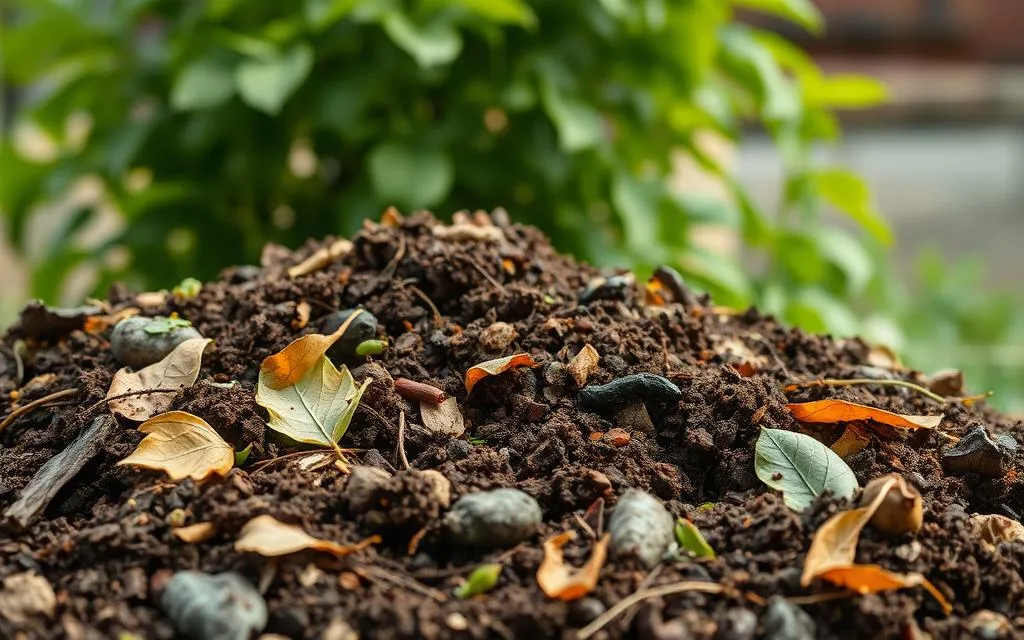How to Repot a Snake Plant? Snake plants are known for being easy to care for. They grow tall with leaves that look like swords, some even have pretty patterns1. They do well in many light levels, from bright sun to dim rooms. Every 3 to 4 years, it’s a good idea to put them in a new pot to keep them healthy2.
This guide will show you how to repot a snake plant step by step. It will also help you pick the best pot and soil. Plus, tips on how to care for your plant once it’s in its new home.
Table of Contents
ToggleIntroduction to Repotting Snake Plants
Snake plants go by many names, such as Dracaena trifasciata or mother-in-law’s tongue. They’re beloved for being tough and easy to care for by many plant lovers.
These plants are perfect for beginners or those who are too busy to spend a lot of time caring for plants. However, even these sturdy plants need some care now and then. Repotting them is a key part of keeping them healthy and thriving3.
What is a Snake Plant?
Originating from Africa’s tropics, snake plants thrive in places like Florida and Hawaii. They stand out with their tall, straight leaves that look like swords. In the wild, they can grow from 6 inches to an impressive 12 feet high.
But, as houseplants, they usually stay between 2 to 5 feet tall. This size range makes them a great fit for various indoor spaces4.
Not only are snake plants adaptable in terms of size, but they can also handle different light levels. This versatility has made them a common sight in both homes and workplaces. People enjoy them for their easy care and unique looks4.
Benefits of Repotting Snake Plants
Every 3 to 4 years, it’s good to repot your snake plant. Doing so keeps it healthy and looking good. When the plant outgrows its pot, its roots can get too cramped. This can slow down its growth or even lead to root rot4.
Spring is the best time for repotting because that’s when the plant is most active. Giving it new soil and extra space helps its roots grow stronger. This process boosts the plant’s health and appearance. It also stops the pot from getting too tight, which can damage the container534.
Signs It’s Time to Repot Your Snake Plant
Your snake plant might need a new pot as it grows. There are signs you should look for. These signs tell you when to repot it. This keeps your plant healthy and growing well6.
Overcrowded Foliage
Is your snake plant’s leaves close together? This means it’s getting too big for its pot. When a plant grows, it makes more leaves and offshoots. They make the center of the plant look full and tight. If it seems like your snake plant has no more space, it’s probably time to move it to a bigger pot7.
Slowed Growth
If your snake plant is not growing as fast, it might need a bigger pot. Growing plants need room to spread their roots and leaves. In spring and summer, plants should grow a lot. If yours isn’t, it may be because its pot is too small7.
Cracked or Bulging Pot
Do you see a crack or bulge in your plant’s pot? This could be the roots pushing the pot from inside. It’s the plant’s way of saying, “I need more space!” A new, bigger pot is probably necessary8.
Looking for these signs can help your snake plant live its best life. Giving it a new pot when it needs one is like giving it a room to grow and flourish. Keep an eye out for these indicators, and your snake plant will thank you with bright, healthy leaves6.
Preparing to Repot a Snake Plant
Repotting a snake plant is easy, but you must do it correctly. It is essential to pick the right time and use the best soil. This ensures your plant grows well. We will look at the perfect season to repot your snake plant. Also, we’ll talk about the soil it loves to encourage its health.
Best Time to Repot
Choose late winter or early spring for repotting. This is when the snake plant grows again after being quiet9. Moving it now, it slowly gets used to its new home and soil.
This is much easier than in the hot summer. By repotting in this season, your snake plant will have lots of time to get used to its new spot. It can then grow strong during the warmer months.
Choosing the Right Potting Mix
Snake plants like soil that drains well and is light, just like where they come from10. A mix of half soil, half perlite, and a bit of sphagnum moss is good.
Alternatively, you can use cactus or succulent mix, which is ready to go10. These options help the water drain fast, a must for snake plants.
Pick a soil that is light and not too heavy. Heavy soil can trap water and harm the roots10. Since snake plants don’t like a lot of water, this choice is key for their health.
| Potting Mix Recommendations for Snake Plants |
|---|
| 50/50 soil mix with added perlite and sphagnum moss |
| Pre-mixed cactus/succulent potting mix |
Choosing the right soil is very important for your snake plant’s move10. By doing it the right way, you help your snake plant do well in its new pot. Good timing and soil are vital for its success.
Step-by-Step Guide: How to Repot a Snake Plant
Repotting a snake plant, also called mother-in-law’s tongue, is easy and good for your plant11. It should be done every few years to give the roots more space and fresh soil11. The perfect time is late winter or early spring, just as it starts growing again11.
First, you need a new pot that’s a bit bigger, a mix made for tropical plants, or soil, peat moss or coco coir, and either perlite or sand1112. Snake plants like shallow, wide pots to keep from falling over11.
- Take the snake plant out of its old pot, trying not to hurt the roots13.
- Cut off any bad or dead roots using sharp, clean pruners13.
- Put the snake plant in the new pot and add more soil around it1112.
- Give it a good soak, making sure the soil is wet but not waterlogged1112.
- Set it in bright, but not direct, light and don’t feed it for a month. This helps it recover11.
- Wait a bit before watering again, as too much can stress it after moving11.
Don’t use any plant food for a month. This gives the snake plant time to get used to its new pot11. Take good care of it, and your snake plant will soon look its best12.
| Repotting Frequency | Pot Size | Potting Mix | Watering | Lighting |
|---|---|---|---|---|
| Every 2-3 years1113 | Wider, shallower pots1112 | Tropical houseplant mix or blend of garden soil, peat moss/coco coir, and perlite/builder’s sand1112 | Water when top inch of soil is dry, avoid overwatering after repotting1112 | Bright, indirect light; avoid direct sun for 1 month after repotting1112 |
Selecting the Ideal Container for Snake Plants
Choosing the right pot for your snake plant is key for its well-being14. Snake plants like to be snug in their pots. They don’t need to be moved often. The best pot is one that’s slightly bigger than the old one.
This lets the roots grow comfortably without over-potting. That means the plant doesn’t get too big for its pot. Over-potting can cause issues like less growth and poor feeding.
Clay or ceramic pots without glaze are great for snake plants14. They breathe, letting air and water reach the roots, which the plants love. Plastic pots are okay, but not ideal.
However, clay or terracotta pots are better because they’re heavier and keep top-heavy snake plants steady. No matter the type, the pot must have holes at the bottom. This is to avoid too much water, bad soil, and a lack of nutrients for the plant.
Pot Size and Material Recommendations
- Choose a pot that is 1-2 inches wider in diameter than the old one. This allows room for the roots to grow without over-crowding15.
- Tip towards clay or ceramic pots. They promote healthy air and water flow around the plant’s roots14.
- Plastic pots are okay, but snake plants do better in clay or terracotta. These keep the plant stable15.
- Don’t forget drainage holes. They stop water from building up, helping to keep the soil and the plant healthy15.
Choosing the right pot and material is important for your snake plant’s health14. Snake plants fit well in modern spaces. Plus, they are easy to care for, making them a great choice for any home141516.
Caring for Your Repotted Snake Plant
After repotting your snake plant, it needs special care17. This helps it adjust to the new home. As snake plant owners, we’ve learned they need the right amount of water and light18.
Watering and Lighting Needs
Snake plants handle drought well. So, water them only when the soil feels completely dry, every 2-3 weeks in summer and less in winter18. They do best in bright, indirect light. Place your repotted plant where it gets a few hours of sun but not directly19. Too much direct sunlight can harm the leaves18. Keep a close eye after repotting. It might need more water at first17.
Snake plants are fine with many light levels, from dim to bright indirect light to some sun18. But they grow and look their best with bright, indirect light19. Changing the light around can really help them settle in after being repotted18.
When watering, know snake plants can do without water for a while19. Water them when the soil is nearly dry. Their thick leaves and rhizomes store water18. Watch out for too much water, which can cause root rot. Be extra cautious in the first weeks after repotting171918.
Tips for Dividing and Propagating Snake Plants
Propagating snake plants lets you easily increase your plant collection. You can give the new plants to friends or family. These hardy plants, sometimes called Sansevieria or Dracaena trifasciata, naturally grow new plants beside the main one. You can separate these new plants to make more20. The best time to do this is spring or summer, when the plant is growing well21.
Carefully take the snake plant out of its pot when you’re ready to divide it. Untangle the roots gently. Then, use a clean knife to cut the new plants away from the main root22. Try to keep a few roots and leaves with each new plant. Start these new plants in their own pots with soil that drains well, like cactus mix. Don’t forget to water them and put them in a spot with bright light but not direct sun.
- It takes one to four months for snake plant cuttings to develop roots. It could take even longer before they start growing new leaves20.
- Trying to grow snake plants in water is easier, but it’s more likely they might rot20.
- Splitting snake plants apart is quicker than growing them from cuttings. They’ll start to grow new roots sooner after you separate them20.
- You can propagate them any time of the year. Just make sure they get enough light and stay warmer than 45°F20.
With the right care, the new snake plant babies will grow strong. You’ll probably see about 90% of them make it. It’s good to wait until these new plants are 4-6 inches tall, but you can do it a bit earlier if you need to22. Use a sharp, clean knife to cut them. This will make the whole process go smoother.
If you want more snake plants or to share them with someone, dividing and growing new ones is fun and not hard. With care and a bit of waiting, you’ll have new large plants growing from the babies.
Popular Snake Plant Varieties
The snake plant, also called Dracaena, is a diverse group. It has many exciting types. For example, the Dracaena angolensis has thick, round stalks. Another, the Dracaena trifasciata ‘Twisted Sister’, has green-and-gold leaves. They all make any room look better23.
Dracaena angolensis
The Dracaena angolensis is known as the Cylinder Snake Plant. It stands out with its thick, round stalks in a rosette. This is different from the usual long, straight leaves. It does well in low light, perfect for those who want a beautiful but easy-care plant24.
Dracaena trifasciata ‘Twisted Sister’
The ‘Twisted Sister’ is a small snake plant type. It has unique green-and-gold leaves that slightly curl. They really catch the eye. Even though it’s small, it has lush, beautiful leaves. It can live in different kinds of light indoors25.
There are many interesting snake plants for fans to enjoy. They have unique looks and can live in different homes. That’s why snake plants are so popular as houseplants23.
Pruning and Maintaining Snake Plants
Snake plants are easy to care for, but they still need some attention. Periodic pruning is key to maintaining their shape and keeping them healthy. It also helps prevent the growth of unsightly dead leaves26.
You should prune your snake plant in the active growing season, like spring or summer. When cutting, use clean, sharp tools to remove any bad leaves at the base. This step is crucial for the plant’s health. It not only looks better but also encourages new leaf growth and keeps pests away27.
Over time, the plant’s leaves may grow too long and spill out of the pot. In this case, you can trim them back to keep the plant looking neat. This also stops it from getting crowded, which can make the leaves turn yellow or wrinkle27.
Good care includes giving your snake plant the right light and not overwatering. It thrives in bright but not direct sunlight. Only water it when the soil is completely dry to the touch. Too much water can cause root rot28. Also, give it a bit of liquid fertilizer every month when it’s growing to keep it healthy28.
Keeping your snake plant in good shape isn’t hard. With a little pruning and the correct care, it will last for many years. Its unique leaves and resilience make it a great choice for any room26.
| Pruning Recommendations | Ideal Conditions |
|---|---|
|
|
Don’t forget, good pruning and care are essential for your snake plants. Follow these guidelines to keep them bright and healthy for many years27.
Troubleshooting Common Snake Plant Issues
Snake plants are strong, but they can still run into issues. Root rot is a big problem, often from too much water. To keep them healthy, let the soil dry between waterings and choose soil that drains well29.
Mealybugs and spider mites can also bother snake plants. An insecticidal soap can clear these pests30.
Too little water makes snake plant leaves look bad. Water when the top soil is dry. Don’t water too much, or you’ll see droopy leaves and root rot3130.
Snake plants need good light to stay strong. They like bright, indirect light. If leaves droop, it might be too dark for them30.
If snake plants are in too-small pots, they might not get enough water or food. Change their pots every now and then for fresh growth30.
With the right care, these plants can be with us for many years. Just watch out for these issues and take quick action.

| Issue | Cause | Solution |
|---|---|---|
| Root Rot | Overwatering | Allow soil to dry completely between waterings, use well-draining potting mix |
| Pests | Mealybugs, spider mites | Treat with insecticidal soap |
| Wrinkled, Limp Leaves | Underwatering | Water when top inch of soil is dry |
| Wilting, Soggy Leaves | Overwatering | Allow soil to dry out, adjust watering |
| Weak, Falling Leaves | Lack of light | Provide bright, indirect light |
| Pot-Bound | Root restriction | Repot with fresh, nutrient-rich soil every few years |
Taking on these challenges head-on ensures our snake plants stay beautiful. They’ll keep growing strong for years293130.
Conclusion
Snake plants are easy to care for and add beauty to our homes. This guide helps us repot them successfully. We just need to be aware of when they need to be repotted, choose the right soil and pot32, and give them good care afterwards33. With some attention, our snake plants will grow tall and stay green for a long time.
Fertilizing snake plants regularly is good for them. It makes them grow stronger and look better33. It’s important to pick the correct pot size and material32. Also, use soil that drains well to avoid problems like stunted growth33 or root rot.
Knowing when to repot a snake plant is key34. By caring for it properly, we can enjoy our snake plant for many years33. Snake plants are durable and don’t need much attention, making them a great choice for our homes. Let’s make sure our snake plants are content by repotting them thoughtfully.
FAQ
What is a Snake Plant?
Snake plants, also called mother-in-law’s tongue, come from Africa. They grow tall with leaves shaped like swords or points.
What are the Benefits of Repotting Snake Plants?
By repotting every 3-4 years, snake plants get a chance to grow more. Plus, their roots can stretch out, and they get fresh soil with more nutrients.
How Do I Know When It’s Time to Repot My Snake Plant?
A snake plant needs repotting when it looks crowded or grows slowly. Also, if the pot looks like it might burst, it’s time for a new one.
When is the Best Time to Repot a Snake Plant?
Late winter or early spring is ideal for repotting. This is when the plant wakes up for the year and starts to grow.
What Type of Potting Mix is Best for Snake Plants?
Use a mix meant for cacti or succulents. It should have peat moss, perlite, and sand. These help the soil drain well, which snake plants love.
How Do I Properly Repot a Snake Plant?
Take it out of its old pot carefully. Untangle the roots a bit. Then, put it in a larger pot. Fill in the space around it with fresh soil.
What Type of Container is Best for Snake Plants?
Clay or ceramic pots that let air and water through are great for snake plants. If not, choose a plastic pot. But always avoid overwatering.
How Do I Care for a Repotted Snake Plant?
Now, water the plant only when the soil is very dry. It likes bright but not direct sunlight. Keep a close eye on it for a few weeks.
Can I Divide and Propagate My Snake Plant?
Yes, snake plants make new plant babies you can separate and plant on their own. Do this in the warm months, like spring or summer.
What are Some Unique Snake Plant Varieties?
There are lots of types of snake plants. For example, the Dracaena angolensis has thick stalks. And the ‘Twisted Sister’ has pretty green-and-gold leaves that curl a bit.
How Should I Prune and Maintain My Snake Plant?
In the growing season, trim away any old or yellow leaves. Trim the long ones down to keep the plant looking good. This also helps it grow well.
What are Common Issues with Snake Plants?
Root rot from too much water is a big problem. Sometimes, bugs like mealybugs or spider mites can show up. Good care stops these issues before they happen.
Source Links
- https://www.marthastewart.com/8031179/snake-plant-grow-guide
- https://savvygardening.com/when-to-repot-a-snake-plant/
- https://greg.app/how-to-repot-a-snake-plant/
- https://www.thespruce.com/snake-plant-care-overview-1902772
- https://www.patchplants.com/gb/en/read/plant-care/how-to-look-after-your-snake-plant/
- https://www.wikihow.life/When-to-Repot-Snake-Plant
- https://myperfectplants.com/blogs/blog/how-to-repot-a-snake-plant
- https://greg.app/how-to-repot-a-cylindrical-snake-plant/
- https://getplanta.com/article/repotting/snakeplant
- https://www.zenplantcare.com/blog/how-repot-a-snake-plant
- https://www.epicgardening.com/repotting-snake-plant/
- https://www.joyusgarden.com/how-to-repot-a-large-snake-plant/
- https://www.greenmatters.com/living/how-to-repot-snake-plant
- https://www.newprocontainers.com/blog/how-to-care-for-a-snake-plant/
- https://gardencomposer.com/how-to-repot-snake-plant/
- https://miraclegro.com/en-us/indoor-gardening/how-to-grow-a-snake-plant.html
- https://www.joyusgarden.com/repotting-snake-plants/
- https://www.hgtv.com/outdoors/flowers-and-plants/houseplants/2019/how-often-water-snake-plant
- https://amsterdamgardencentre.ca/blogs/news/caring-for-your-houseplants-how-to-divide-your-snake-plant
- https://www.bhg.com/gardening/houseplants/care/propagate-snake-plant/
- https://fgsdurham.com/blog/repotting-and-dividing-birdsnest-sansevieria/
- https://cleverbloom.com/divide-sansevieria-beginners/
- https://rosysoil.com/blogs/news/snake-plant-varieties
- https://www.livelyroot.com/blogs/plant-care/snake-plant
- https://www.stamenandstemblog.com/blog/sansevieria
- https://www.gardenersworld.com/how-to/grow-plants/how-to-grow-snake-plant-sansieveria/
- https://thenatureofhome.com/how-to-trim-a-snake-plant-prune/
- https://36vine.com/blogs/plant-care-guides/snake-plant/
- https://www.livelyroot.com/blogs/plant-care/snake-plant-leaves-issues
- https://www.bhg.com/snake-plant-leaves-falling-over-8391735
- https://greg.app/snake-plant-problems/
- https://planttrick.com/snake-plant/how-to-repot-snake-plant/
- https://be.green/en/blog/revitalize-your-snake-plant-with-expert-repotting-tips
- https://spiderfarmer.ca/repotting-snake-plant/










